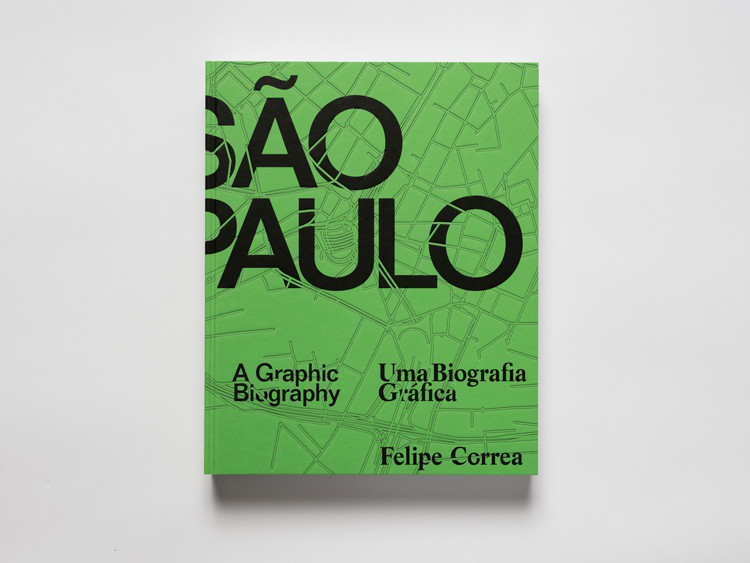São Paulo
São Paulo: A Graphic Biography
Felipe Correa
University of Texas Press, October 2018

Hardcover | 9-1/4 x 11-3/4 inches | 348 pages | 420 illustrations | English/Portuguese | ISBN: 978-1477316276 | $65.00
Publisher Description:




Author Bio:
(Note: Books bought via these links send a few cents to this blog, keeping it afloat.)




Felipe Correa
University of Texas Press, October 2018

Hardcover | 9-1/4 x 11-3/4 inches | 348 pages | 420 illustrations | English/Portuguese | ISBN: 978-1477316276 | $65.00
Publisher Description:
While the history of São Paulo dates back more than 450 years, most of its growth took place after World War II as the city’s major economic engine shifted from agriculture to industry. Today, as São Paulo evolves into a service economy hub, Felipe Correa argues, the city must carefully examine how to better integrate its extensive inner city post-industrial land into contemporary urban uses. In São Paulo: A Graphic Biography, Correa presents a comprehensive portrait of Brazil’s largest city, narrating its fast-paced growth through archival material, photography, original drawings, and text. Additional essays from scholars in fields such as landscape architecture, ecology, governance, and public health offer a series of interdisciplinary perspectives on the city’s history and development.dDAB Commentary:
Beyond presenting the first history of Paulista urban form and carefully detailing the formative processes that gave shape to this manufacturing capital, São Paulo shows how the city can transform its post-industrial lands into a series of inner city mixed-use affordable housing districts. By reorienting how we think about these spaces, the volume offers a compelling vision of a much-needed urban restructuring that can help alleviate the extreme socioeconomic divide between city center and periphery. This twenty-first century urban blueprint thus constitutes an impressive work of research and presents a unique perspective on how cities can imagine their future.
When I think of São Paulo, Brazil, a handful of buildings come to mind: Paulo Mendes da Rocha's Brazilian Museum of Sculpture, Lina Bo Bardi's Museu de Arte de São Paulo (MASP) and SESC Pompeia Leisure Center, the Faculty of Architecture and Urbanism at the University of São Paulo by Joao Batista Vilanova Artigas and Carlos Cascaldi, and Oscar Niemeyer’s Edifício Copan. While these modern buildings are considered masterpieces and are known well beyond the Brazilian metropolis, they are just a few blips in the massive conglomeration that is São Paulo. With "its seemingly endless expanse of over 6,000 high-rise buildings," per Edward Glaeser's foreword to this book, São Paulo is a city that could hardly be understood by a handful of buildings, no matter how impressive they are. Felipe Correa's impressive, heavily illustrated "graphic biography" of São Paulo thoroughly conveys the layered complexity of the city's physical past and present, allowing someone like me, who hasn't set foot on Brazilian soil, to start to understand the place.Spreads:
Correa's book is organized in five "units." Unit A, which makes up the bulk of the book, is the "graphic biography" of the book's subtitle, comprised of multiple sections ("City of Ridges and Valleys," "City of Points," "City of Warehouses," etc.) that use maps, archival and contemporary photographs, and essays by scholars to explain the city's urban morphology. The other four units present "a series of design strategies and examples of relevant urban projects" focused on housing, transportation, planning, and infrastructure. Although São Paulo appears chaotic (one section in the book even presents maps of the various urban "grids," many of them very un-grid-like), São Paulo: A Graphic Biography is structured logically and presented clearly. Green pages that match the cover separate the various units, and each one is notched to illustrate the book's progression (see bottom spread). In between are pages that alternate between white and blue: white for the graphic biography and projects, and blue for the scholarly essays. This design makes the book look like a layer cake of information when seen from the side, and it makes me wish I've been to São Paulo so I could more fully appreciate the book's contents.




Author Bio:
Felipe Correa is an associate professor of urban design and Director of the Urban Design Program at the Harvard University Graduate School of Design. An architect and urbanist, he has developed numerous international projects through his practice, Somatic Collaborative. His previous books are Beyond the City: Resource Extraction Urbanism in South America, Mexico City: Between Geometry and Geography, and A Line in the Andes.Purchase Links:
(Note: Books bought via these links send a few cents to this blog, keeping it afloat.)



